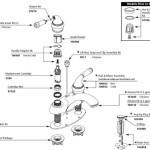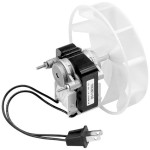Wall Exhaust Fan for Bathroom: A Room-Saving Ventilation Solution
Bathrooms are known for being humid, moisture-laden spaces. To ensure proper ventilation and prevent the buildup of mold and mildew, a wall exhaust fan is an essential addition. This article delves into the benefits, types, and installation considerations of wall exhaust fans for bathrooms.
Benefits of a Wall Exhaust Fan
Moisture Control: Exhaust fans remove excess moisture from the air, reducing humidity levels and preventing the formation of condensation on walls, ceilings, and mirrors.
Odor Removal: Bathroom odors from toiletries, laundry, and bodily functions can be efficiently expelled by exhaust fans, maintaining a fresh and odor-free environment.
Prevent Mold and Mildew: High humidity levels can lead to mold and mildew growth, which can cause health problems. Exhaust fans help keep bathrooms dry, creating an unfavorable environment for these microorganisms.
Types of Wall Exhaust Fans
Axial Fans: These fans feature blades mounted on a central shaft that rotates, drawing air through the fan and expelling it outward.
Centrifugal Fans: Centrifugal fans have blades mounted on a rotating wheel that spins within a housing. They are more efficient than axial fans and can handle higher airflows.
Mixed-Flow Fans: Combining the features of axial and centrifugal fans, mixed-flow fans offer a balance of efficiency and airflow.
Choosing the Right Wall Exhaust Fan
Airflow Capacity: Airflow capacity is measured in cubic feet per minute (CFM). The appropriate CFM for a given bathroom depends on its size. For an average-sized bathroom, a fan with a CFM of 50-80 is typically sufficient.
Sound Level: Exhaust fans can produce noise. Consider fans with a lower decibel (dB) rating to minimize noise levels in the bathroom.
Energy Efficiency: Look for fans that are Energy Star certified to ensure energy efficiency and cost savings.
Humidity Sensor: Some exhaust fans come with built-in humidity sensors that automatically turn on the fan when humidity levels rise, ensuring optimal ventilation.
Installation Considerations
Electrical Requirements: Exhaust fans typically require a 120-volt electrical connection. Ensure you have a qualified electrician install the fan.
Ventilation Ducting: An exhaust fan requires proper ventilation ducting to expel air from the bathroom. Use rigid or flexible ducting that is the correct size for the fan's CFM capacity.
Placement: Position the exhaust fan on an exterior wall or ceiling where it can effectively draw air from the entire bathroom. Avoid placing it directly above the shower or bathtub to prevent moisture from entering the fan.
Conclusion
A wall exhaust fan is an indispensable element for any bathroom. By effectively removing moisture, odors, and preventing mold and mildew, it ensures a healthy, comfortable, and odor-free environment. When selecting and installing a wall exhaust fan, consider the factors discussed in this article to achieve optimal ventilation in your bathroom.

220v 4 6 8 Inch Remote Control Window Wall Exhaust Fan For Bathroom

220v 4 6 8 Inch Remote Control Window Wall Exhaust Fan For Bathroom

Kdk Bathroom Wall Exhaust Fan R Mandi 6 15egka 15 Egka

What Extractor Fan Do I Need For My Bathroom Blog World
Exhaust Fan Kipas Angin Hexos Plafon Dak 8 Inch 10 220v 6 Ventilation Hanging Wall Mounted Low Noise Home

Panasonic Fv 10egk1abn Bathroom Wall Exhaust Fan 10 Cm Di Indo Builder Tokopedia

6 8 10 12 Inch Commercial Kitchen Garage Wall Exhaust Ventilation Fans Futina

Exhaust Fan Atau Wall Kipas Dinding Uran 6 Ata

Ventilation Extractor Fan Low Noise Indonesia Ubuy

220v 4 6 8 Inch Remote Control Window Wall Exhaust Fan For Bath
See Also







